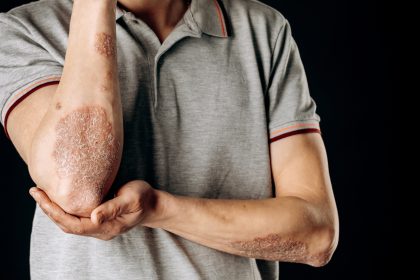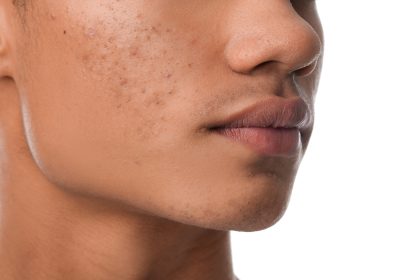New research reveals why the popular practice of getting a pre-vacation tan offers almost no protection while significantly increasing health risks
What exactly is base tanning?
As summer vacations approach, many people rush to tanning beds or spend hours in the sun hoping to develop what’s commonly called a “base tan.” This practice involves deliberately exposing your skin to ultraviolet (UV) radiation with the intention of developing a slight tan before heading to a sunny destination.
The theory behind base tanning suggests that this initial color development provides a protective layer against more intense sun exposure later. Many believe this preliminary tan will prevent painful sunburns during beach vacations or outdoor activities.
This practice has become a pre-vacation ritual for millions of Americans. Indoor tanning facilities often promote special “vacation prep” packages, encouraging customers to build up their base tan over several sessions before traveling.
Despite its popularity, this common practice rests on fundamentally flawed understanding of how UV radiation affects skin cells and the minimal protection any tan actually provides.
The protection myth: How much defense does a base tan really offer?
The most dangerous misconception about base tanning involves its supposed protective benefits. Extensive research has consistently demonstrated that a base tan provides minimal shielding against harmful UV rays.
When measured scientifically, the protection offered by a base tan equals approximately SPF 2 to 4. For context, dermatology organizations universally recommend using sunscreen with SPF 30 or higher for adequate protection.
This means even the darkest natural tan blocks only about 4% of UV radiation, leaving your skin vulnerable to 96% of incoming harmful rays. This negligible protection falls dramatically short of what your skin needs to prevent damage.
Moreover, obtaining this minimal protection requires skin damage in the first place. The tanning process itself represents your skin cells responding to injury by producing more melanin – the pigment that darkens skin. This means you’ve already harmed your skin just to gain that SPF 2-4 protection.
The 5 most damaging myths about base tanning
Several persistent misconceptions continue to fuel the base tanning industry despite overwhelming scientific evidence. Here are the five most dangerous myths:
- Myth: Base tans prevent sunburn completely
Reality: While a slight tan might delay burning slightly, it provides nowhere near complete protection. Most people with base tans still experience sunburn during extended sun exposure, particularly during peak UV hours. The false confidence from having a base tan often leads people to stay in the sun longer without reapplying sunscreen, ultimately causing more severe damage than if they had no tan at all. - Myth: Indoor tanning beds provide safer UV exposure than natural sunlight
Reality: Tanning beds concentrate UV radiation and can deliver doses up to 12 times stronger than natural midday sunlight. Indoor tanning devices primarily emit UVA rays which penetrate deeper into skin layers than UVB rays. This deeper penetration causes significant cellular damage while providing even less protection against future sun exposure than natural tanning. - Myth: As long as you don’t burn, tanning is safe
Reality: Every tan, regardless of whether burning occurs, represents skin cell damage at the DNA level. This cellular injury accumulates over time and significantly increases skin cancer risk. The absence of redness doesn’t indicate an absence of damage – it merely means the damage hasn’t reached the threshold of causing painful inflammation. - Myth: Base tanning helps build vitamin D levels
Reality: While sunlight does trigger vitamin D production in the skin, tanning isn’t necessary to achieve adequate levels. Brief, incidental sun exposure several times weekly provides sufficient vitamin D stimulation without tanning. For those with deficiencies, dietary sources and supplements offer safer alternatives than deliberate UV exposure. - Myth: Young skin can better tolerate tanning without long-term effects
Reality: UV damage accumulates throughout life, and research shows that exposure during childhood and young adulthood significantly increases lifetime skin cancer risk. The effects of early tanning often become visible decades later as premature wrinkles, sun spots, and increased cancer risk. Young skin may recover more quickly from sunburn, creating a dangerous illusion of resilience.
The hidden health costs of chasing a base tan
The pursuit of a base tan carries serious health implications extending far beyond immediate sunburn risk. These deeper concerns affect both short-term and long-term wellbeing.
Skin cancer risk increases significantly with UV exposure, regardless of whether that exposure comes from natural sunlight or artificial sources. Research has established clear connections between tanning and all forms of skin cancer, including potentially deadly melanoma.
Each tanning session damages skin cell DNA, creating mutations that can develop into cancerous growths years or decades later. This cellular damage accumulates with each exposure, making every tanning session an additional risk factor.
Accelerated skin aging remains one of the most visible consequences of UV exposure. Photoaging caused by UV radiation breaks down collagen and elastin, the proteins responsible for skin firmness and elasticity. This degradation leads to premature wrinkles, leathery texture, and permanent discoloration.
UV exposure also weakens the immune system both locally in the skin and throughout the body. This immunosuppression can reduce vaccination effectiveness and increase susceptibility to infections, creating vulnerabilities that extend well beyond skin health.
The psychological component driving tanning behaviors
Understanding why base tanning persists despite known risks requires examining the psychological factors driving this behavior. Many people report feeling more attractive and confident with tanned skin, reflecting deeply ingrained beauty standards that associate tanned skin with health and vitality.
Social media has intensified these pressures, with filtered images creating unrealistic expectations for year-round tans. This perception gap drives many people to pursue tanning despite understanding its potential dangers.
For some individuals, tanning triggers endorphin release, creating a mild sense of euphoria that can lead to dependence similar to other addictive behaviors. Research has identified patterns of tanning addiction in some regular tanners, making risk awareness insufficient to change behavior.
The immediate visual feedback of tanning (seeing results quickly) contrasts with the delayed consequences (cancer risk decades later), creating a psychological disconnect that makes it easier to dismiss long-term concerns.
Healthier alternatives for sun-kissed skin
For those seeking the aesthetic benefits of tanned skin without the health risks, several safer alternatives exist. Self-tanning products have dramatically improved in recent years, offering natural-looking results without UV exposure. These products contain dihydroxyacetone (DHA), which reacts with amino acids in the skin’s surface to create temporary color.
Bronzing makeup provides immediate color that washes off at day’s end, ideal for special occasions. Modern formulations include options for all skin tones and types, with waterproof varieties available for summer activities.
Spray tans applied professionally provide even, customizable color that typically lasts 5-7 days. Many formulations include skincare ingredients like aloe vera and antioxidants that actually benefit skin health.
For those concerned about vitamin D levels, appropriate supplements monitored by healthcare providers offer a safer alternative than tanning. Blood tests can determine precise supplementation needs without UV exposure risks.
Essential sun protection strategies that actually work
Effective sun protection requires a comprehensive approach that goes beyond occasional sunscreen application. Consistent daily use of broad-spectrum sunscreen with minimum SPF 30 provides the foundation for sun safety. Application should occur 15-30 minutes before sun exposure, with reapplication every two hours or immediately after swimming or excessive sweating.
Physical barriers offer excellent protection when chosen correctly. Wide-brimmed hats, UV-blocking sunglasses, and clothing with ultraviolet protection factor (UPF) ratings provide reliable shielding without the need for reapplication.
Timing outdoor activities to avoid peak UV hours (10 a.m. to 4 p.m.) significantly reduces exposure intensity. Morning or late afternoon activities allow for outdoor enjoyment with substantially lower radiation levels.
Regular skin examinations help identify concerning changes early, when treatment success rates are highest. Monthly self-examinations combined with annual professional skin checks create a comprehensive monitoring system.
Changing perceptions about healthy skin
Creating meaningful change requires shifting cultural perceptions about what constitutes healthy, beautiful skin. Embracing your natural skin tone represents both a health decision and a step toward more inclusive beauty standards that appreciate diverse skin colors.
The growing awareness of sun damage has spawned movements celebrating sun protection rather than tanning. Hashtags like #sunsafety and #skincancerprevention have gained traction as influencers increasingly promote protected skin as the new standard of beauty.
Many celebrities now openly discuss choosing sun protection over tanning, creating powerful role models that counterbalance traditional tanning imagery in media and advertising.
Educational campaigns highlighting the connection between UV exposure and visible aging have proven particularly effective at reaching appearance-motivated audiences who might dismiss cancer warnings as too abstract or distant.
The emerging appreciation for long-term skin health over temporary tanning represents a significant shift in beauty standards that promises healthier outcomes for future generations.















